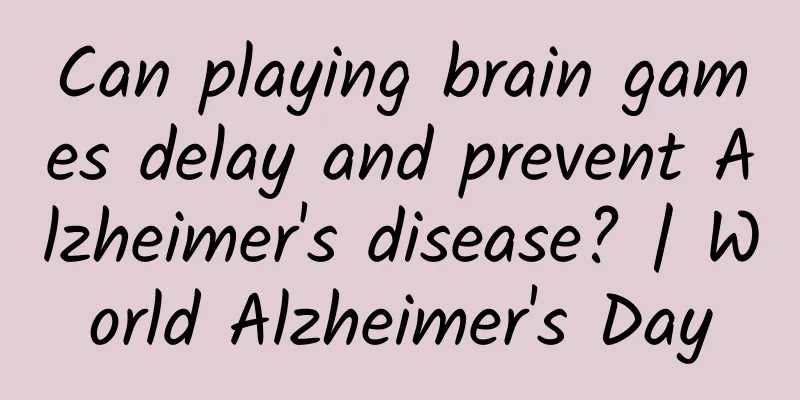Questions and Answers on the Dietary Guidelines for Growth Stunting in Children and Adolescents (2023 Edition)

|
Recently, the National Health Commission issued the "Notice of the General Office of the National Health Commission on Printing and Distributing Four Dietary Guidelines Including the Dietary Guidelines for Adult Hyperlipidemia (2023 Edition)". In order to implement the "Healthy China Action (2019-2030)" and "National Nutrition Plan (2017-2030)", develop traditional dietary services, and prevent and control the occurrence and development of chronic diseases in the Chinese population, the "Dietary Guidelines for Adult Hyperlipidemia (2023 Edition)", "Dietary Guidelines for Adult Hypertension (2023 Edition)", "Dietary Guidelines for Growth Retardation in Children and Adolescents (2023 Edition)", and "Dietary Guidelines for Adult Diabetes (2023 Edition)" were compiled. The four dietary guidelines aim to give full play to the advantages of modern nutrition and traditional diet in both Chinese and Western medicine, integrate food and drug substances and new food ingredients into a reasonable diet, and provide recipe package examples and nutritional and health suggestions for different populations, different regions, and different seasons to improve the applicability and operability of dietary guidance. In the near future, the editor will share these four latest dietary guidelines with you. Let's learn together with the editor~ 1. What is the purpose and significance of the "Dietary Guidelines for Growth Retardation in Children and Adolescents (2023 Edition)"? The formulation of the "Guidelines for Dietary Treatment of Growth Retardation in Children and Adolescents (2023 Edition)" (hereinafter referred to as the "Guidelines") is based on meeting the health needs of the people, and provides scientific guidance for preventing and controlling the occurrence and development of growth retardation in children and adolescents in my country, helping children and adolescents develop healthy eating habits, improving nutritional health levels, and developing traditional dietary services. The significance of the formulation of the "Guidelines" lies in: First, giving full play to the advantages of both Chinese and Western medicine in modern nutrition and traditional dietary treatment, integrating food and medicinal substances into a reasonable diet, and assisting in the prevention and improvement of growth retardation. Second, recipe examples are compiled for different regions and seasons, and dietary guidance is proposed to enhance the personalization and operability of dietary guidance. Third, based on modern nutrition theory and relevant evidence, as well as the concepts and conditioning plans of traditional Chinese medicine, promote the integration of Chinese and Western medicine, inherit the traditional dietary culture, and effectively promote the high-quality development of dietary services. 2. What is the basis for the formulation of the “Guidelines”? The Guidelines are formulated based on the relevant requirements of the Healthy China Action (2019-2030) and the National Nutrition Plan (2017-2030). The Healthy China Action (2019-2030) points out that it is necessary to encourage the development of traditional dietary care services and give full play to the role of traditional Chinese medicine in children's health care services. The National Nutrition Plan (2017-2030) proposes to give full play to the advantages of traditional Chinese medicine, formulate dietary care guidelines for residents that are in line with my country's current situation, guide the formation of dietary care habits that are in line with the dietary characteristics of different regions in my country, carry out dietary care guidance for children, and improve residents' dietary care literacy. 3. What are the principles underlying the formulation of the Guidelines? The formulation of the Guidelines follows the following four principles: First, the principle of scientificity. The Guidelines are based on literature research on nutrition science, TCM diet theory, and evidence of the relationship between food and health. They refer to relevant domestic and foreign guiding principles, guidelines, standards, and classics, and combine my country's actual situation and expert opinions to determine the framework of the guideline system, and conduct repeated expert argumentation on the content to ensure scientificity. Second, the principle of coordination and consistency. During the formulation of the Guidelines, my country's current food-related laws, regulations, and management regulations were sorted out to ensure coordination and consistency with various requirements. Third, the principle of openness and transparency. The preparation of the Guidelines has widely solicited opinions from relevant departments and experts and scholars in related fields, universities, research institutes, medical institutions, and social groups. Fourth, the principle of combining guidance with practicality. The formulation of the Guidelines fully considers the current situation, development trend, and influencing factors of growth retardation in children and adolescents in my country, puts forward diet principles and suggestions, and lists optional food recommendations, recipes, and examples of diet recipes in combination with the characteristics of different syndrome types, different regions, and different seasons, so that users can refer to and choose according to specific circumstances. 4. What is the status of relevant consensus, guidelines and standards at home and abroad? There are few dietary guidelines for growth retardation in children and adolescents at home and abroad. This guideline refers to the "Dietary Guidelines for School-Age Children in China (2022)", "Nutrition Guidelines for Student Meals" (WS/T 554-2017), "Nutrition Guidelines for Weight Management in School-Age Children" (T/CNSS 011-2021), "Expert Consensus on Clinical Practice of Physical Development Assessment and Management of Children", and the "Identification and Management of Growth Retardation in Children" guideline issued by the National Institute for Health and Clinical Excellence (NICE) in the United Kingdom in 2017. Based on the above research results, according to evidence-based medicine and expert consensus, this guideline proposes dietary recommendations for growth retardation in children and adolescents, including lifestyle. 5. What are the main contents of the Guidelines? The Guidelines provide dietary principles and recommendations based on the characteristics of growth retardation in children and adolescents. The appendix describes in detail the food choices and dietary recipes for children and adolescents with growth retardation, the recommendations of food and medicine for different syndromes, and tools such as recipe examples and common food exchange tables for different regions and seasons. At least three days of recipes (including food and medicine) are listed for each region. VI. How to use the Guidelines after they are released? The Guidelines are mainly aimed at primary health workers (including nutrition counselors), parents and school doctors of children and adolescents aged 2 to 17, and provide dietary guidance for the auxiliary prevention and improvement of growth retardation in children and adolescents. Primary health workers (including nutrition counselors) are encouraged to refer to the Guidelines for auxiliary prevention and improvement of growth retardation in combination with work needs and the actual situation of children and adolescents with growth retardation. The Guidelines mainly target growth retardation related to dietary nutrition (such as protein-energy malnutrition, vitamin and mineral deficiencies, etc.), rather than growth retardation caused by pathological reasons such as food allergies, idiopathic dwarfism, growth hormone deficiency or functional defects, chronic systemic diseases, etc. Relevant patients are requested to eat a reasonable diet under the guidance of professionals such as doctors and nutrition counselors. The Guidelines are dietary guidance for children and adolescents with growth retardation and cannot replace drug treatment. 7. What should children and adolescents with growth retardation pay attention to in their diet? The food choices for children and adolescents with growth retardation should be comprehensive, balanced and diverse. Ensure three meals a day, regular meals, and adequate energy and nutrient intake. Each meal should include 3 or more types of food such as cereals and potatoes, vegetables and fruits, livestock and poultry, fish and eggs, milk and soybeans; the number of food types should reach more than 12 per day and more than 25 per week. Special attention should be paid to choosing foods with high nutrient density. Fish and shrimp foods have high nutrient density such as high-quality protein, vitamin D, B vitamins, and minerals; dark green leafy vegetables have high nutrient density such as minerals and vitamins; egg yolks are an important source of multiple nutrients, such as vitamin A, vitamin D, vitamin E, phosphorus, iron, choline, etc., and are also one of the foods with high nutrient density. At the same time, on the basis of a reasonable diet, food and drug substances can be selected for different syndromes. 8. How to use the dietary recipes in the “Guidelines”? The food and medicine substances selected in the dietary prescription are the items that are both food and medicine announced by the National Health Commission. The method of consumption can refer to the usage and dosage of the dietary prescription in the "Guidelines". Children and adolescents with corresponding symptoms can consume it until the symptoms improve or disappear. The dietary prescription in the "Guidelines" takes 8-year-old school-age children as an example. Combined with common clinical problems, the dietary prescriptions and servings are listed for reference. The servings for children and adolescents in different regions and different ages are not completely consistent. The severity of symptoms and the degree of growth and development will affect the servings and frequency of taking the dietary prescription. It is recommended to choose the dietary prescription and the time of consumption under the guidance of professionals such as doctors and nutrition counselors, and adjust according to actual conditions. 9. How to refer to the recipe examples in the Guidelines to reasonably arrange the daily meals for children and adolescents with growth retardation? The Guidelines provide a three-day quantitative diet example for 8-year-old school-age children. Users can design a variety of recipes by replacing some of the foods with similar foods according to the Common Food Exchange Table in the appendix, such as rice can be replaced with millet, chicken can be replaced with duck, pork can be replaced with beef, fish can be replaced with shrimp, etc. For example, in the winter and spring recipes in the northwest region, the cabbage vermicelli stewed with tofu in dinner can be replaced with stir-fried tofu skin with vermicelli and small cabbage or vermicelli stewed with tofu. Just remember to exchange similar foods. Children and adolescents of other age groups can make appropriate adjustments based on the recommended intake of various foods for different age groups in the Guidelines. The popular science content of this platform has been funded by the China Association for Science and Technology's Science Popularization Department's 2022 National Science Literacy Action Project "National Society Science Popularization Capacity Improvement Project-Rehabilitation Science Popularization Service Capacity Improvement Action Plan" |
>>: Why am I emo even before my period comes?
Recommend
Women's cheating behavior
In daily life, everything has standards, and thos...
What causes uterine polyps?
Many women find uterine polyps after examination,...
I was fine, so how come I got chronic pharyngitis?
Eating spicy hot pot in the cold winter is perfec...
Among the risks of osteoporosis, this is the most easily overlooked! Some people consider thinness beautiful when they are young, but become "brittle bones" when they are old.
What is the relationship between osteoporosis and...
Can pregnant women pick their belly buttons?
Pregnant women's belly buttons are not allowe...
Eating less salt does not mean less intake! These 10 commonly eaten foods are actually "invisible salt consumers"
Everyone knows that we need to control salt in ou...
What causes delayed menstruation?
Delayed menstruation is a very common condition f...
What to eat for breast development in children
Breast development is usually the golden period f...
Can I eat avocado during my period?
Due to the special physiological structure of wom...
Can I get an injection to induce labor at 37 weeks?
You cannot use oxytocin injections at 37 weeks. I...
How do women wear underwear?
How should women choose underwear? If the underwe...
What are the advantages of a smart toilet seat? What are the functions of a smart toilet seat?
The smart toilet has a uniquely designed water-wa...
Introduction to the treatment of hydatidiform mole
If the pregnancy is a healthy fetus, people will ...
Can I get pregnant with aging follicles?
Nowadays, many women have infertility problems. T...









